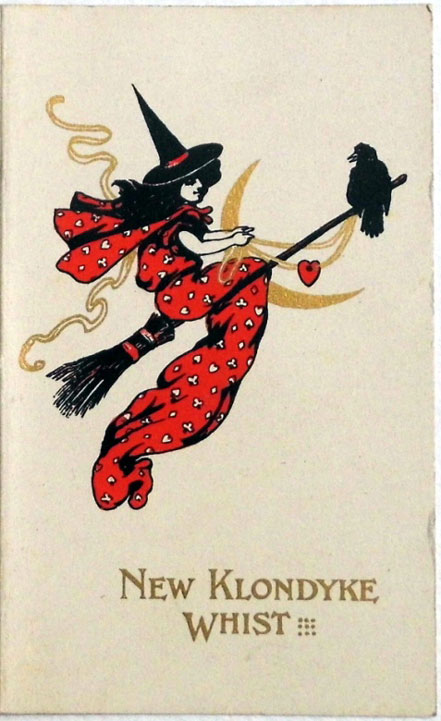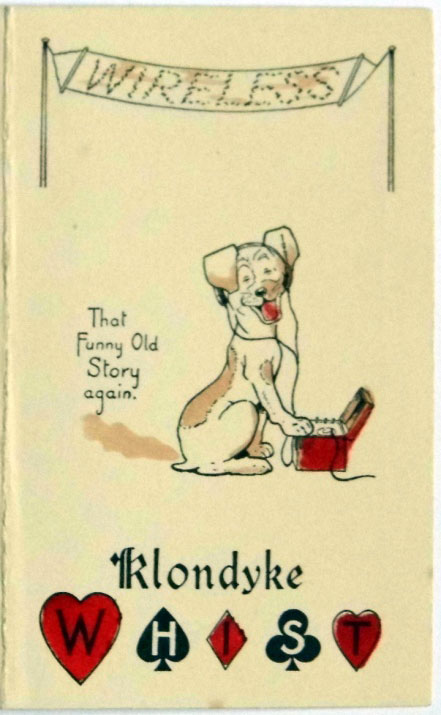Progressive Whist Cards
There are references to “progressive whist” or “whist drives” during the 19th and early years of the 20th century but this form of the game came into its own during the 1920s and 30s.
by Tony Hall
There are references to “progressive whist” or “whist drives” during the 19th and early years of the 20th century, but this form of the game was to come into its own, and become a major social event during the 1920s and 30s. It was an ideal opportunity for groups of like-minded people to socialise and to demonstrate their card –playing skills. For some, it was evidently taken very seriously; for many others it was an excuse for socialising and fun.
Reflecting and encouraging this trend, stationery manufacturers (and in particular Goodall & Son) were quick to produce score cards to facilitate progressive whist occasions. Hundreds of cards were produced in a wide range of styles. My own collection numbers 200 or so different cards and these just scratch to surface of a social trend which was hugely popular between the wars. The many examples below range from the early twentieth century to the 1970s. It is still possible to buy new ones today. Most are impossible to date accurately except by reference to the design and the social context in which they were made and sold. Consequently it is possible to see that the vast majority were produced during the social upheavals of the 1920s and 30s when “progressive” forms of Whist and Bridge were most popular.
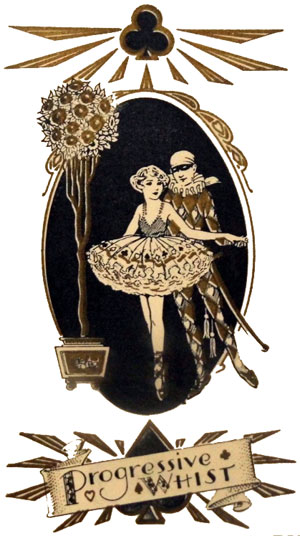
All the items needed for a successful occasion were available commercially. Here is a set of stylish table cards for a 12 table encounter, together with a rather formal invitation card.
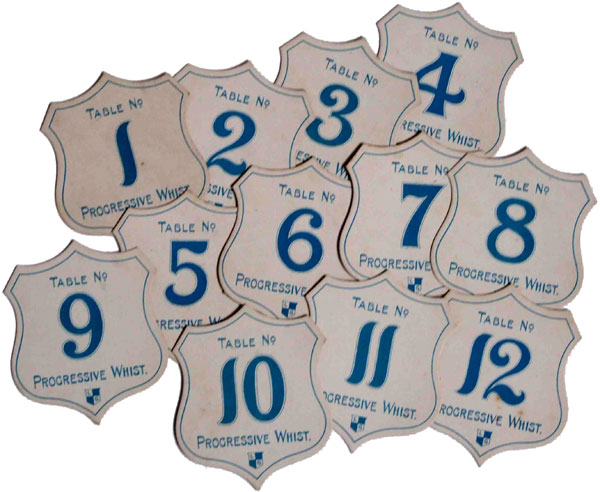
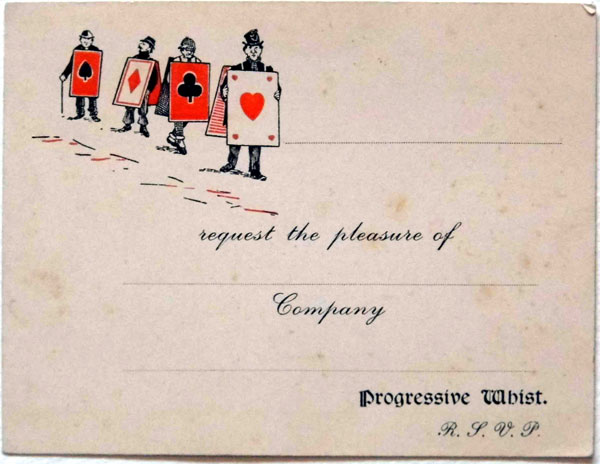
There were many variations in style, from the very Victorian to the trendier, more “modern” variety. All offered simple round by round straight scoring, with partnerships moving after each hand in a pre-determined pattern. Books were published from the 1870s onwards advising on the best forms of progression from table to table.
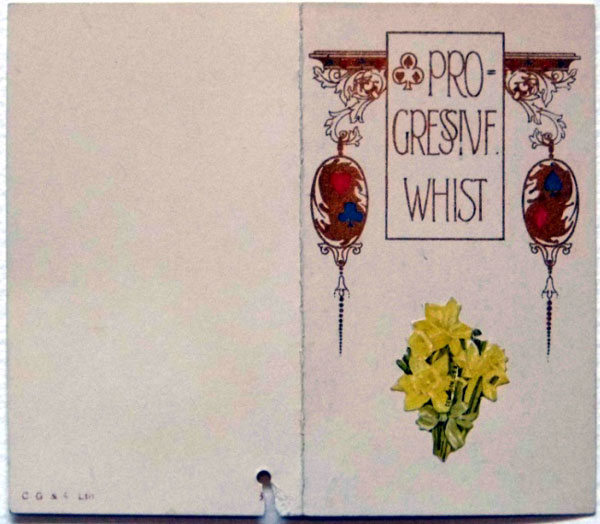
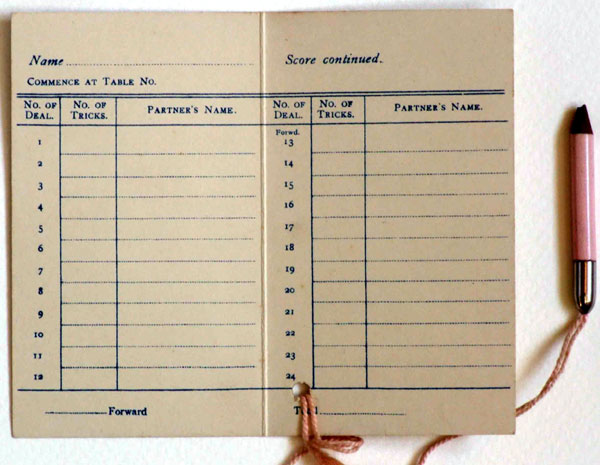
Cards typically offered up to 24 hands, with an attached pencil to enable players to keep a record of their various partners as the evening progressed.
They were available in boxes. Chas. Goodall & Son were major producers in huge variety. This classic set contains the rules, 12 cards, 12 pencils.
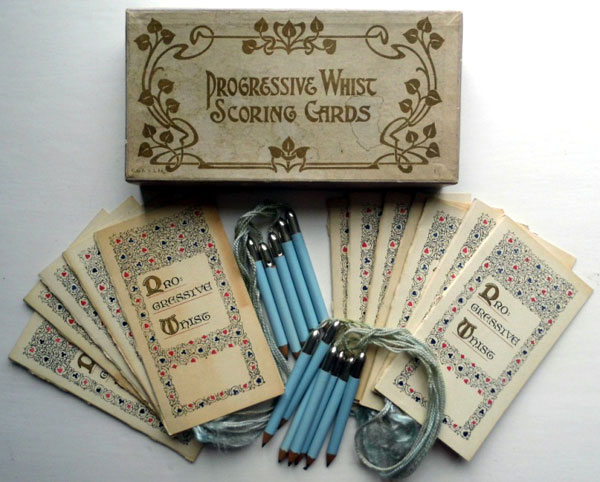
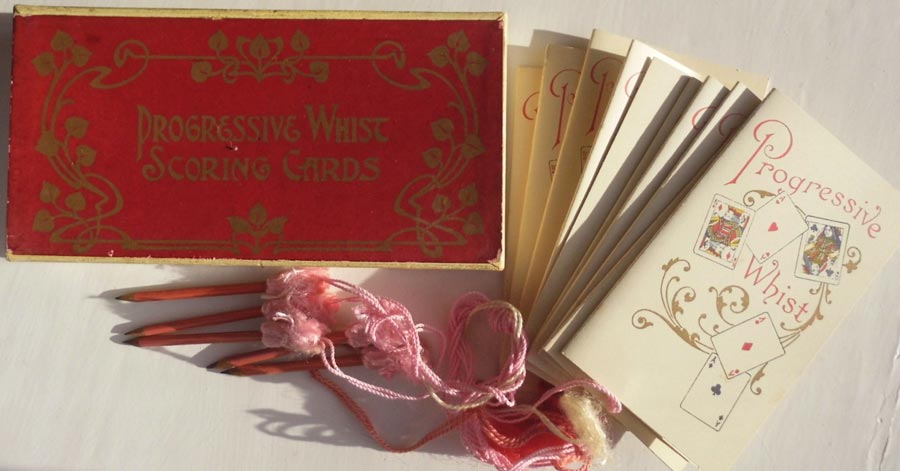
The designs were legion:
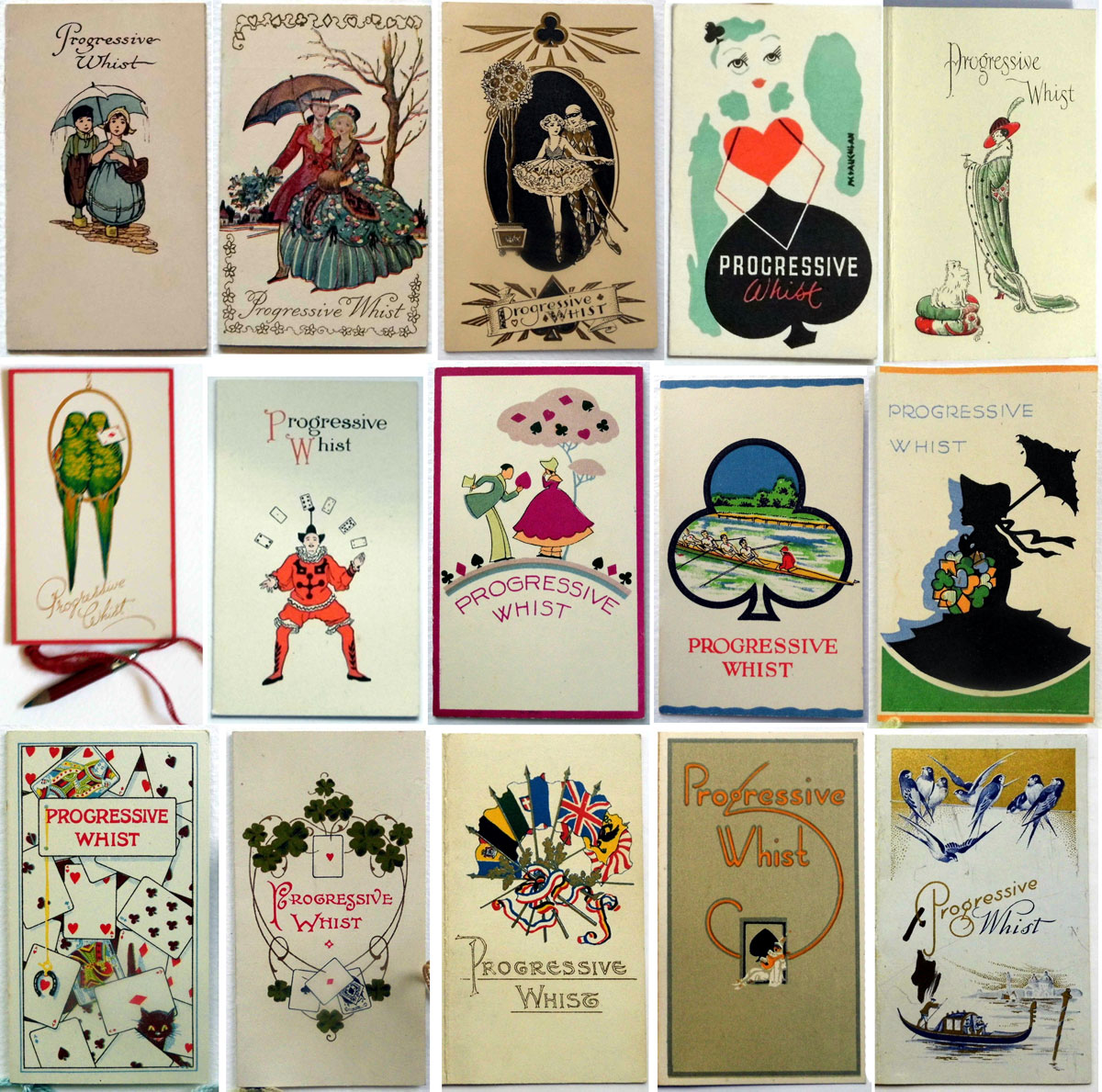
and literally hundreds more in a wide variety of styles.
This one is interesting because it appears to have been commissioned for a particular event, backprinted with the names of the donors and sponsors:
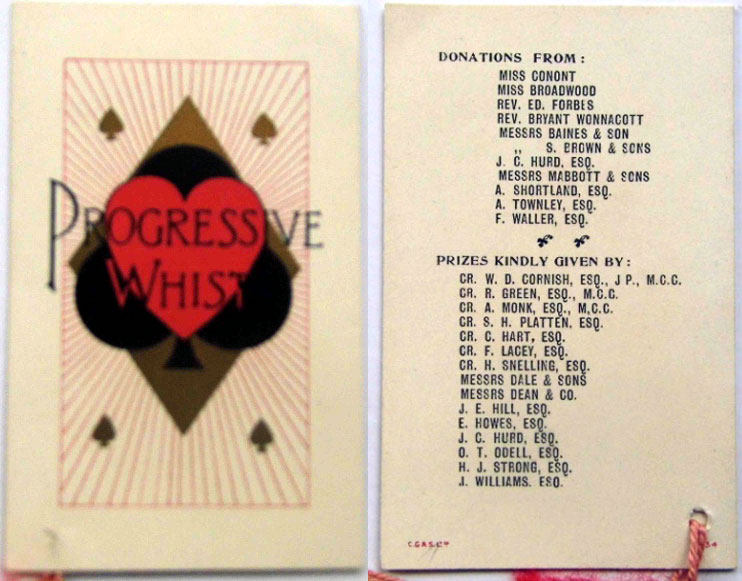
And this variant suggests a “Social Class” reference...
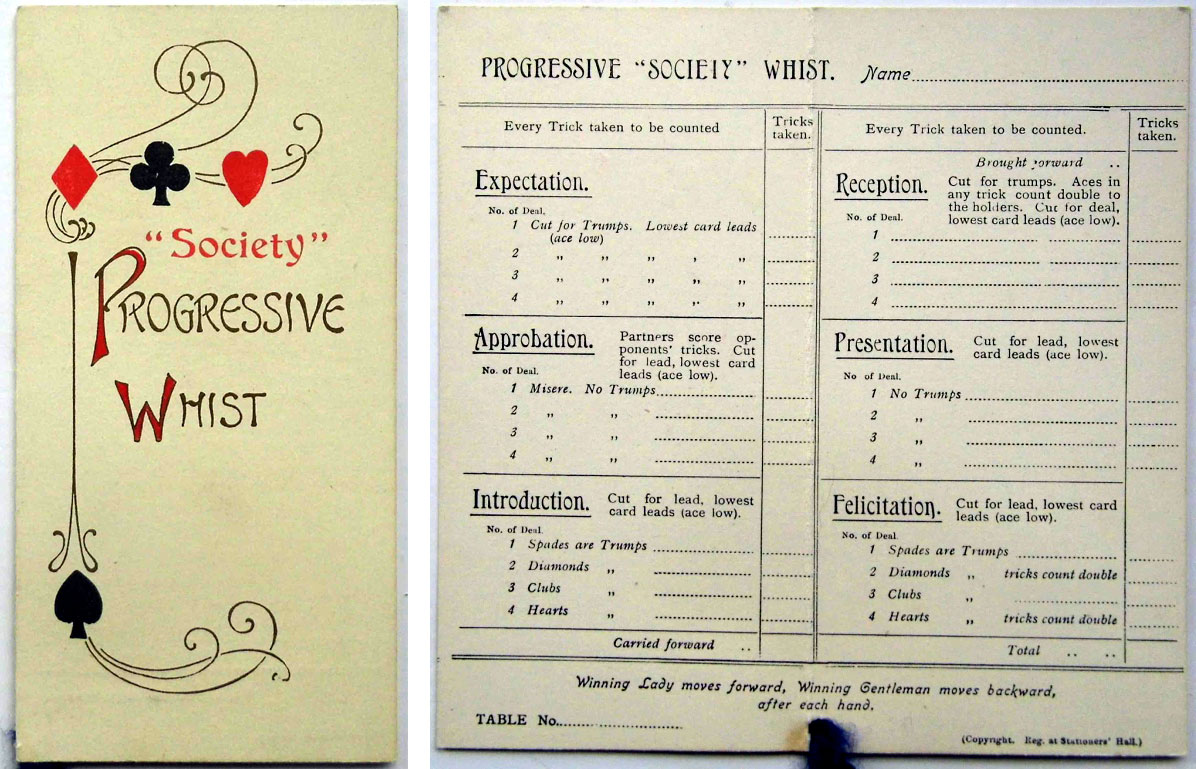
Once Progressive Whist became popular, a range of variations were developed to maintain or increase the interest. One advert for “Golf Whist” (dated 1909) gives a clue as to the appeal of such variants. It reads: “Golf Whist is a modification of the Progressive Whist scoring cards to give the game the sporting interest of golf... The main principle... is that the first 18 rounds are treated as the ‘holes’ in a golf course and the lowest score for the ‘round’ ... gets the Golf Prize. It will be found that the new element causes much merriment, and that it is some consolation for a poor score at any table to be regarded as a good Golf score.” Whist was being promoted as more for fun than for the classical skills of serious play.
The variations were popular and almost endless.
CRAZY Whist introduced minor changes in each round as the game progressed.
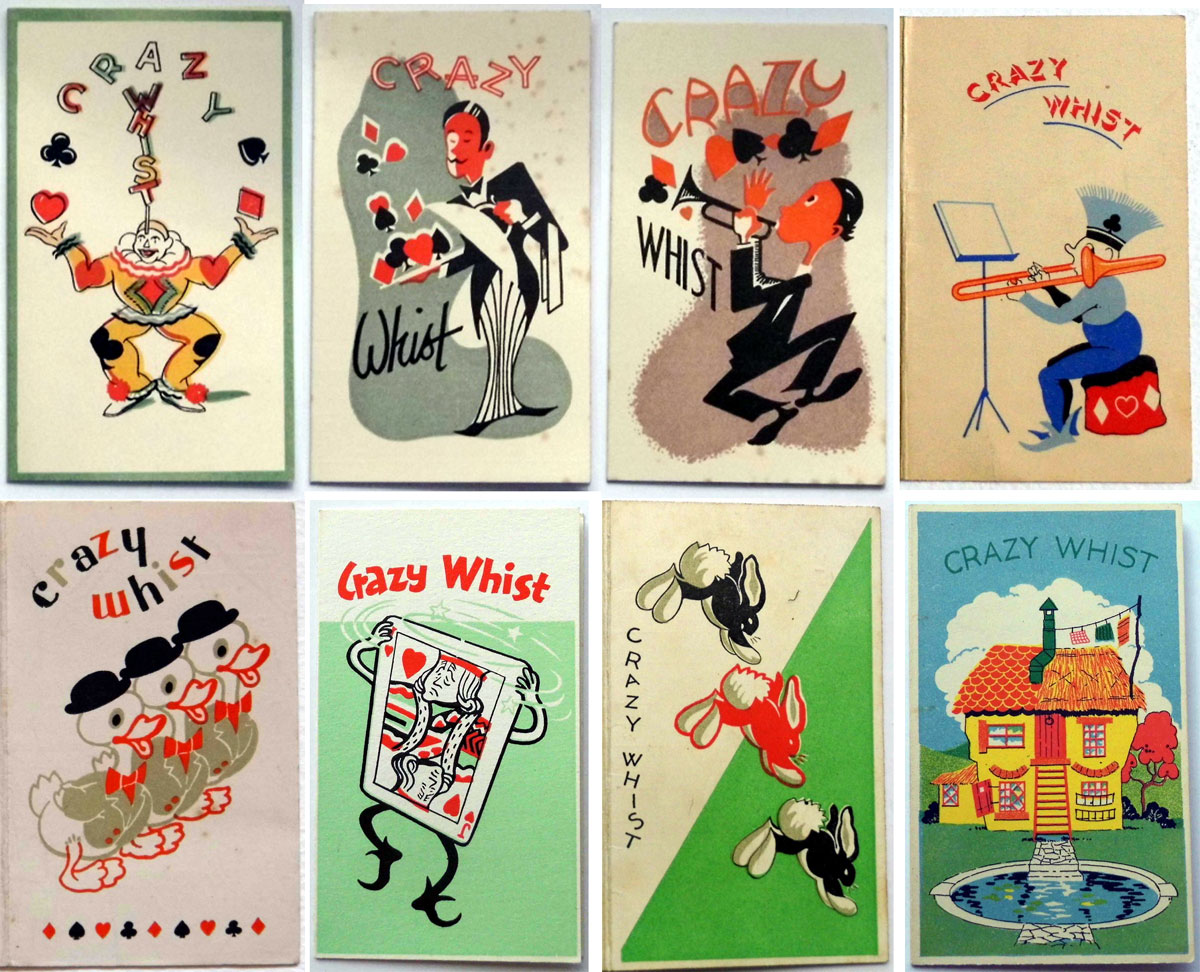
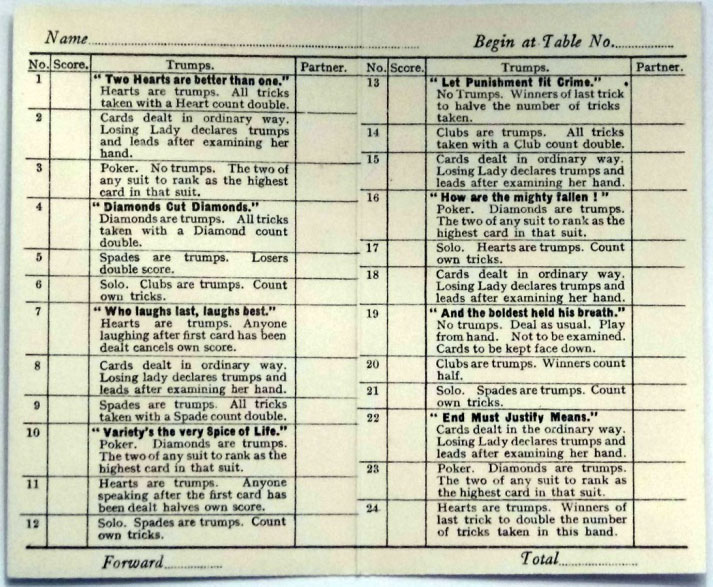
There were many other variants, all seeking to add something to the standard progressive game. Each with their own scoring variations as players moved from one table to the next.
There was Klondyke:
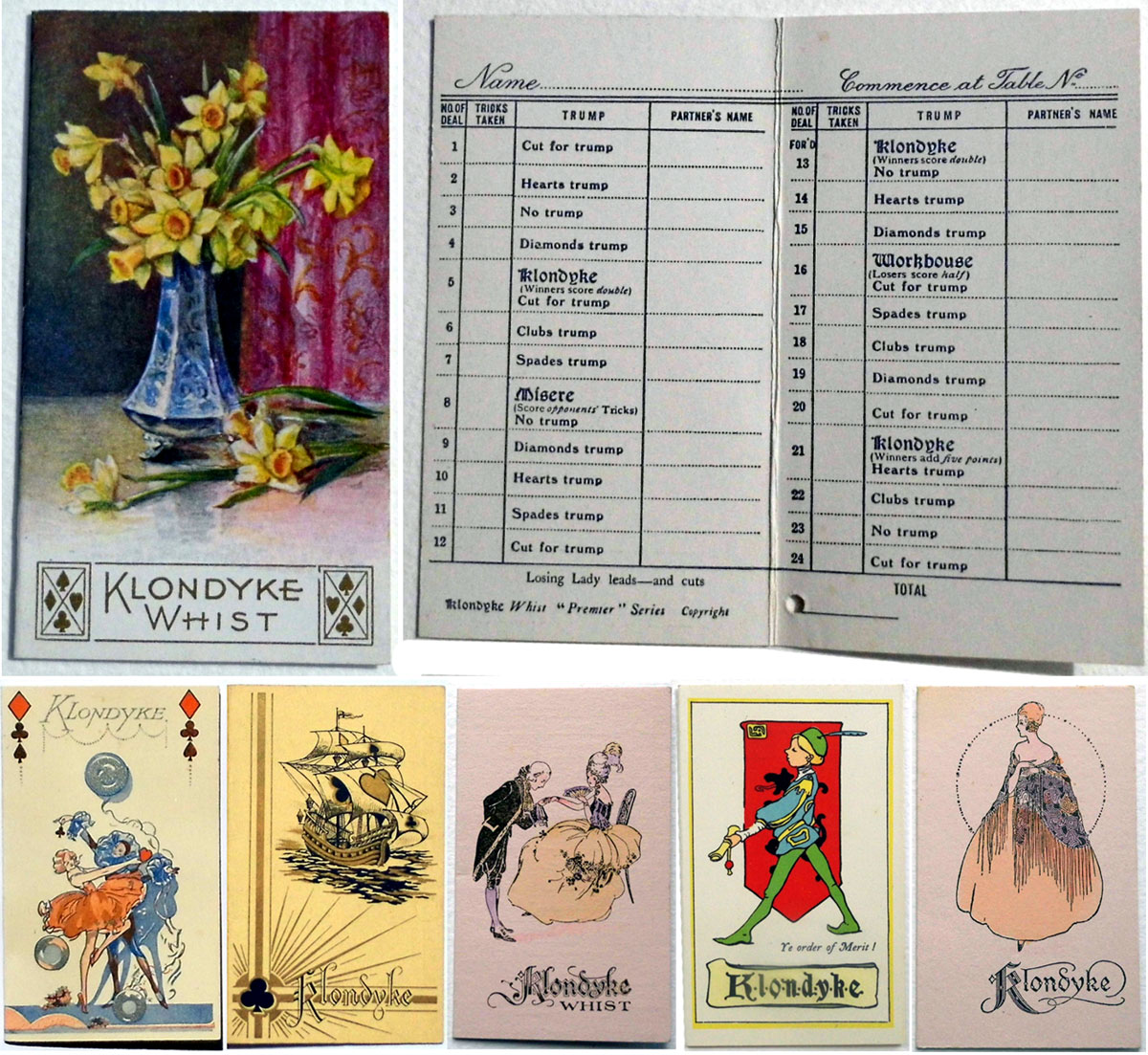


By Tony Hall
Member since January 30, 2015
I started my interest in card games about 70 years ago, playing cribbage with my grandfather. Collecting card game materials started 50 years or so later, when time permitted. One cribbage board was a memory; two became the start of a collection currently exceeding 150!
Once interest in the social history of card games was sparked, I bought a wooden whist marker from the 1880s which was ingenious in design and unbelievably tactile. One lead to two and there was no stopping.
What happened thereafter is reflected in my articles and downloads on this site, for which I will be eternally grateful.
Related Articles

Copechat Paramount Sorting System
Preserving the past: a specimen deck showcasing edge-notched cards and their ingenious sorting syste...

Pastime Playing Cards for the Blind
The “Pastime” Playing Cards for the Blind manufactured by Goodall & Son Limd., c.1910.

French Revolutionary cards by Pinaut
Seven cards from a French Revolutionary pack by Pinaut featuring characters from classical antiquity...

Whist by Ditha Moser
Ditha Moser created this minimalist Whist deck in 1905, in the style of the Vienna Secession art mov...

Jockey Club de Buenos Aires
Spanish-suited pack by Chas Goodall & Son Ltd for the Jockey Club, Buenos Aires.

Agatha Christie and card games
Agatha Christie uses card-play as a primary focus of a story, and as a way of creating plots and mot...

Rouen Pattern - Portrait Rouennais
An attractive XV century French-suited design from Rouen became the standard English & Anglo-America...

Ganjifa - Playing Cards from India
Indian playing cards, known as Ganjifa, feature intricate designs with twelve suits and are traditio...

The Henry Hart Puzzle
Explore the intricate history and unique design variations of Henry Hart's playing cards, tracing th...

Sevilla 1647 reproduction
Facsimile of Spanish-suited pack produced in Sevilla, Spain, 1647.

Why our playing-cards look the way they do
Analysis of early playing card designs: origins, suit differences, standardization, technological ad...

Introduction to Collecting Themes
Playing cards can be broadly categorised into standard and non-standard designs, with collectors app...

Le Monde Primitif Tarot
Facsimile edition produced by Morena Poltronieri & Ernesto Fazioli of Museo Internazionale dei Taroc...

So-Lah – A Game of Music
An early 20th century domino-type musical card game by Goodall.

Lo Cartescacco / Chess playing cards
Playing cards designed by F. Romagnoli bringing together Chess and Bridge, Italy, c. 1981.

The Search for New Games in the late 19th century
A few new games survived and are still around today; most came and went and are only witnessed in th...
Most Popular
Our top articles from the past 28 days



